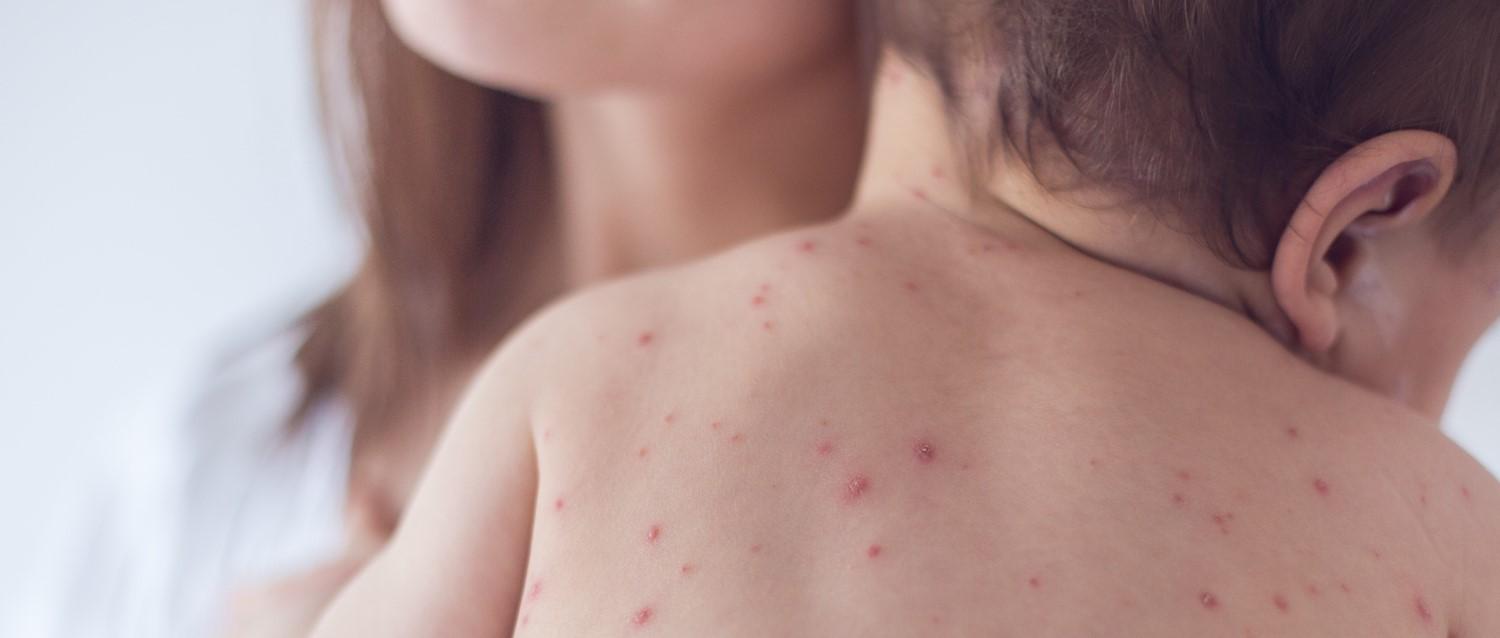Gusanos de hilo
Peer reviewed by Dr Colin Tidy, MRCGPLast updated by Dr Philippa Vincent, MRCGPLast updated 14 Nov 2024
Satisface las necesidades del paciente directrices editoriales
- DescargarDescargar
- Compartir
- Idioma
- Debate
In this series:Itchy bottomWorm medicines
Threadworms are tiny worms in your poo. They are common in children but do not cause problems other than itchiness. They can usually be treated with over-the-counter medicine from a pharmacy.
En este artículo:
Puntos clave
Threadworms - also called pinworms - are tiny, white worms that infect the large intestine and can be seen in poo or around the bottom.
They are common in children and spread when tiny eggs from an infected person’s bottom get onto hands, surfaces, or food, and are then swallowed by someone else.
Everyone in the household should be treated at the same time - even if they have no symptoms - using worm medicines such as mebendazole.
Washing hands, keeping nails short, bathing daily, and cleaning clothes and bedding helps stop threadworms from coming back.
¿Qué son los gusanos roscados?
Seguir leyendo
¿Qué aspecto tienen los gusanos?
Threadworms are small, thin, white, thread-like worms between 2 mm and 13 mm long. They infect human guts (intestines). Worms in children are very common but anyone of any age can be affected. A threadworm is called a pinworm in some countries.
The image shows two female threadworms next to a ruler. The markings on the ruler are 1 mm apart so these threadworms are about half a centimetre long.
Gusanos de hilo

Erich gasboy, Public Domain, via Wikimedia Commons
How do threadworms spread?
People often wonder how their children got threadworms in the first place.
Typically someone with threadworms (usually a child) touches their bottom (either when they are cleaning themselves after going to the toilet or when they are scratching) and one or more of the tiny eggs gets caught under their fingernail. If they do not wash their hands thoroughly at the time, this egg can get transferred to a surface such as a door handle.
When someone else touches that surface, the egg then transfers to their hand. When that next person puts their hands in their mouth (for example when eating or biting their fingernails), the egg is swallowed and moves into their digestive tract. The worms then hatch from the eggs and the cycle starts again.
Seguir leyendo
The life cycle of threadworms
Threadworms live for about 5-6 weeks in the gut and then die.
Before they die, the female worms lay tiny eggs around the back passage (anus). This tends to occur at night.
The eggs are too small to see without a microscope but they cause itching around the anus due to the mucus surrounding the eggs being irritating to the skin. This area around the anus is then scratched to relieve the itching, often during sleep. These eggs get on to fingers and under fingernails and can then be swallowed as described above.
Any eggs that are swallowed then hatch and grow into adult worms in the gut. Therefore, a cycle of threadworm infection can go on and on.
The number of threadworms in the gut during an infestation varies from person to person.
How long do threadworm eggs live for?
Threadworm eggs can survive for up to two weeks outside the body. They fall off the skin around the anus and can fall on to bedding, clothes, etc. They can then get wafted in the air as clothes and bedding etc is changed.
Some eggs may settle on food or toothbrushes. So, children may swallow some eggs by playing with other children who have eggs on their fingers, or from food or toothbrushes that have been contaminated with threadworm eggs.
Threadworm symptoms
Los síntomas comunes incluyen:
Seeing the worms in the poo (faeces) or near to the back passage (anus). They look like thin, white, cotton threads.
Severe itching around the anus.
Waking up during the night as a result of the itching.
Young girls in particular also often complain of severe itching around the vulva and vagina, usually in the night or soon after going to bed. They may feel that they need to pass urine urgently and keep going to the toilet even though they have an empty bladder. Sometimes this can get confused with vulvovaginitis or thrush.
Seguir leyendo
Are threadworms dangerous?
Not usually. Often, the worst thing about them is the itch and discomfort around the back passage (anus) which can wake people from sleep. Scratching may make the anus sore.
Large numbers of threadworms may possibly cause mild tummy (abdominal) pains and make a child irritable. In girls, threadworms can wander forwards and lay their eggs in the vagina or urethra (the tube through which you pass urine).
Rarely, threadworms can cause other problems such as loss of appetite and weight loss.
Threadworms treatment
All household members, including adults and those without symptoms, should be treated. This is because many people with threadworm infection do not have any symptoms. However, they will still pass out eggs which can then infect other people.
If one member of a household is infected, it is common for others also to be infected. So, everyone needs treatment.
The common treatments are:
To take a threadworm medicine to kill the worms in the gut; and
Hygiene measures to clear eggs which may be around the back passage (anus) or in the home.
Note: for babies under the age of 6 months, only hygiene measures are possible, as no medicine is able to be given in this age group.
How to get rid of threadworms naturally
Medication will kill the worms in the gut but not the eggs that have been laid around the anus.
Hygiene measures aim to clear any eggs from the body and the home, and to prevent any eggs from being swallowed. This will then break the cycle of re-infection.
First, as a one off, it is important to try to clear eggs from where they may be in the home. This means:
Washing sleepwear, bed linen, towels and cuddly toys.
Vacuuming and damp-dusting the home.
Thoroughly cleaning the bathroom by damp-dusting surfaces, washing the cloth frequently in hot water.
Then, every member of the household should do the following for two weeks:
Wear close-fitting underpants or knickers in bed, and change every morning.
Every morning have a bath, or wash around the anus straight away, to get rid of any eggs laid overnight.
Ideally, change and wash nightwear each day.
It is often not the home which is the main source of threadworm eggs. Children may come into contact with eggs in schools or nurseries, particularly in the toilets if they are not cleaned properly. This is why a child may have recurring threadworms, even if the home and personal hygiene are of a very high standard.
Medicación
Mebendazole is the usual treatment for people aged over 2 years. If children are over 6 months but under 2 years, they can still take the medicine but it is unlicensed. Threadworm liquid or chewable tablet medicine is available for children and chewable tablets for adults. All household members, including adults and those without symptoms, should take a dose at the same time.
Going to the pharmacy
Mebendazole can be bought from pharmacies and is also available on prescription.
After taking the first dose of medication for threadworms, it is essential to follow the hygiene measures outlined above. Sometimes a second dose of medication is recommended two weeks after the first in case any eggs have been swallowed after the first dose.
¿Y si estoy embarazada o en periodo de lactancia?
Embarazo
Many pregnant women may prefer not to take medication in the first trimester of pregnancy. Hygiene measures alone may work and the worms die after about six weeks.
Provided that no new eggs are swallowed, no new worms will grow to replace them. Following the hygiene measures described above for six weeks should break the cycle of re-infection and clear the gut of threadworms.
However there is no evidence of harm to the baby from mebendazole taken in pregnancy.
Lactancia materna
Along with most medications, mebendazole is not licensed to be used in breastfeeding. If breastfeeding, six weeks of hygiene measures alone may be the preferred treatment to start with. However there is no evidence of harm to the baby of women who have taken mebendazole whilst breastfeeding.
Can a child with threadworms go to school?
Yes. There is no need to keep a child with threadworms off school, nursery, etc. The hygiene measures described above will mean that children will not have any eggs on their fingers when they go out from the home each day and so are unlikely to infect others.
Can you prevent threadworms?
General hygiene measures which reduce the risks of getting threadworms again are:
Washing hands and scrubbing under the nails first thing in the morning, after using the toilet or changing nappies, and before eating or preparing food.
Trying not to bite nails or suck fingers, and discouraging children from doing so.
If possible, avoiding sharing towels or flannels.
Preguntas más frecuentes
Do threadworms go away on their own?
Threadworms rarely go away on their own. Treatment with medication is usually needed to kill the worms, and good hygiene helps stop them coming back.
Can threadworms kill you?
Threadworms can be unpleasant but they’re not dangerous and won’t kill you. They’re common, especially in children, and can be easily treated with medication.
Why do threadworms come out at night?
Threadworms come out at night as part of their life cycle. They move from the intestine to the anus at night to lay their eggs, taking advantage of the warm, still environment while you sleep.
Why do I keep getting threadworms?
You may keep getting threadworms because they are highly contagious and easily spread within households. Eggs can survive on bedding, clothing, and surfaces, leading to reinfection. Treating everyone in the household and maintaining good hygiene is key to stopping them coming back.
Selección de pacientes para Infecciones

Salud infantil
Enfermedad de manos, pies y boca
La fiebre aftosa suele ser una enfermedad leve de corta duración que afecta principalmente a los niños. La mayoría de los niños se recuperan totalmente en diez días, y normalmente menos. Rara vez se producen complicaciones graves. Esta enfermedad no está relacionada con la enfermedad de nombre similar que afecta a los animales.
por el Dr. Toni Hazell, MRCGP

Salud infantil
Varicela infantil
La varicela causa manchas (erupción cutánea) y puede provocar malestar general en el niño. El objetivo del tratamiento es aliviar los síntomas hasta que la enfermedad desaparezca. La recuperación completa es habitual en niños menores de 12 años. Las complicaciones graves son raras, pero es más probable que aparezcan en niños con un sistema inmunitario deficiente, como los que reciben quimioterapia.
por el Dr. Colin Tidy, MRCGP
Lecturas complementarias y referencias
- Dunphy L, Clark Z, Raja MH; Enterobius vermicularis (pinworm) infestation in a child presenting with symptoms of acute appendicitis: a wriggly tale! BMJ Case Rep. 2017 Oct 6;2017. pii: bcr-2017-220473. doi: 10.1136/bcr-2017-220473.
- Gusano de la roscaNICE CKS, febrero de 2023 (sólo acceso en el Reino Unido)
- Pinworm InfectionCentro para el Control y la Prevención de Enfermedades
- Best use of medicines in pregnancy: Mebendazole
Seguir leyendo
Historia del artículo
La información de esta página ha sido redactada y revisada por médicos cualificados.
Fecha prevista para la próxima revisión: 13 nov 2027
14 Nov 2024 | Última versión

Pregunte, comparta, conecte.
Explore debates, formule preguntas y comparta experiencias sobre cientos de temas de salud.

¿Se encuentra mal?
Evalúe sus síntomas en línea de forma gratuita
Sign up to the Patient newsletter
Your weekly dose of clear, trustworthy health advice - written to help you feel informed, confident and in control.
By subscribing you accept our Privacy Policy. You can unsubscribe at any time. We never sell your data.